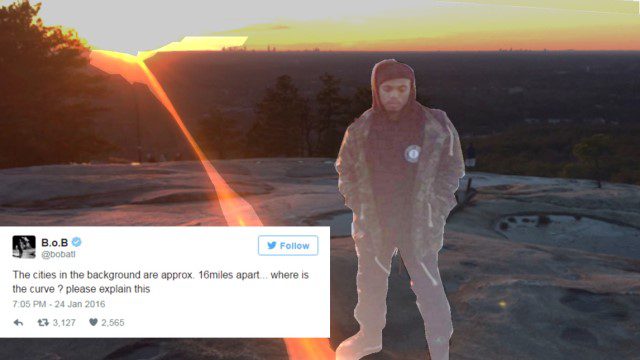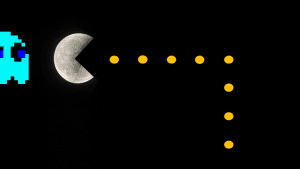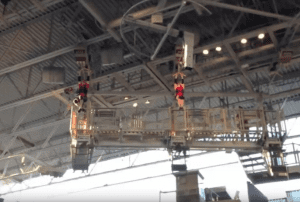Let’s talk about an obvious truth. Suicide is a choice. It’s unlike cancer. People with cancer don’t make a conscious choice. They don’t take a deliberate action. But, people commit suicide.
Two beloved actors died over the last two years. We offered genuine respect and love to Alan Rickman who was said to have succumbed to cancer. He lost his battle the headlines read.
By contrast, our response to Robin Williams was much less clear. He “committed” suicide. Many headlines added that he hanged himself.
Many in the suicide prevention community have discontinued the use of the word “commit,” but many have not. I mean it kind of works, right? This isn’t the year 1800- we don’t think of suicide as a sin or crime any more. But, we do think of it as a choice, as a deliberate action.
This is an obvious and self-evident truth, we believe. We don’t need research or science to prove it. We just know it. Isn’t that right?
The earth is flat, it’s obvious
Earlier this year, a hip hop star called B.o.B. made the headlines. If you didn’t already know him from his hit songs like “Magic” and “Airplanes,” you may have heard about his epic Twitter feud with astrophysicist Neil deGrasse Tyson.
It started here at Stone Mountain overlooking metro Atlanta all the way up to Sandy Springs.

B.o.B. (what’s hip hop etiquette? Can we call him Bob?) tweeted, “There are 16 miles between the cities in the background, but no curve.” Please explain this.
Look it – it’s obvious the earth is flat. Imagine if you will that we didn’t have our modern science. We didn’t have super cool astrophysicists like Neil deGrasse Tyson. Going back a thousand years, the earth would in fact have looked downright flat to everyone of us. From the every-man perspective, with a limited view, this appeared to be obvious for thousands of years.
Of course, there have always been signs that our limited view as humans was… well… limited. First clue, in every lunar eclipse, we see the shadow of the earth cast against the moon. And, we see a circle.
If the earth were actually flat, we might instead see something like this during a lunar eclipse…
My youngest son saw me working on this post and from his vantage point, “Dad, look- it’s Pac-Man.” And, I replied, “That doesn’t look anything at all like Pac-Man!” Perspective. And Context.

In their online rap battle (not making this up), Neil deGrasse Tyson explained to B.o.B. that a combination of the Foucault (pronounced Foo-Coe) pendulum (2nd clue) and the shadow of the earth on the moon during an eclipse together prove the earth is a sphere.
The lunar eclipse proves the earth is round. And, the Foucault pendulum demonstrates that the earth rotates. These clues could have been put together (and were) long before satellites or space travel. The conclusion: the world must be a ball!
Apparently, this was way too much looking through a glass darkly and didn’t persuade B.o.B. He believes the pictures of the round earth are the CGI creations of a conspiracy, and in reality, most humans have not seen this view with their own eyes.
However, if we could change his perspective. Instead of 16 miles across, let’s go one more mile. Let’s make it 17 miles… but straight up. Now, the curvature of the great, great big planet begins to emerge. The ah-hah moment!
In life, we don’t always get the 17 mile perspective. Sometimes we fall one mile short. What seems obvious could not be more wrong, and sometimes, unlike B.o.B. tweets, there are in fact consequences.
Back to Suicide as a Choice
I wish we could zip up 17 miles to see the true perspective, but it’s going to take some faith. Let’s look at the clues, what doesn’t fit, that nagging circle shadow of the earth on the moon.
First clue, falling is not a choice
 A few years ago, I participated in Fear Factor. In the first act, I was hanging from an upside-down Y-shaped bar 40 feet high above the ground.
A few years ago, I participated in Fear Factor. In the first act, I was hanging from an upside-down Y-shaped bar 40 feet high above the ground.
I’m pretty competitive, and I chose to outlast the five others, to be the last one hanging on… no matter what it took, no matter how hard it was.
And, that all sounded really good… until the exact moment the platform holding my weight dropped away underneath me. I was immediately slipping on the bar, struggling to hold on, my hands sweaty. I double-downed my grip! But, quickly, my muscles began to ache with intense pain and my forearms ballooned like Pop-eye. The pain only intensified as the seconds passed.
I’m a clinician. I can handle this, I told myself. I relaxed my breathing, went to my happy place, a beach in my mind with gentle waves lapping- that strategy was good for a couple seconds and then NOT WORKING!
Finally, I was simply repeating to myself “hold on one more second… one more second.”
It was a long ways to fall. I desperately wanted to hang on. That was the only choice in my head, and yet, I still could not. Gravity, fatigue, and I was forced to succumb to the pain. If falling was a choice, I would still be there hanging on!
Watch my embarrassing fall as my legs fight to resist the inevitable.
Second clue, pain is not a choice
Let’s talk about the pain. I mean, we believe we get it, right? The every-man perspective around suicide is that we can get a sense of the pain. We don’t understand the choice, but we have all had sadness and disappointment. Griefs and losses. The normal ups and downs of being human. These experiences have given us an insight into the pain behind suicide, haven’t they?
One of America’s top novelists William Styron said not a chance. His book “A Darkness Visible” about his own debilitating and suicidal depression is titled after John Milton’s description of Hell in “Paradise Lost.”
No light; but rather darkness visible
Where peace and rest can never dwell, hope never comes
That comes to all, but torture without end
One of our most talented writers ever, Styron said his depression was so mysteriously painful and elusive as to verge close to being beyond description. “It thus remains nearly incomprehensible to those who haven’t experienced extreme mode.”
If you haven’t experienced this kind of darkness, anguish, the clinical phrase “psychic distress” probably doesn’t help much. Styron offers the metaphor of physical pain to help us grasp what it’s like. But, frankly, many with lived experience say they would definitely prefer physical pain to this anguish.
Putting the Clues Together
So, some of you are thinking, I get everything you are saying but my loved one didn’t fall passively… I’m sure they were in pain, but they took a deliberate action. They pulled a trigger. They ingested a poison. So, let’s put these two clues together, but reverse the order. The pain. And, the response.
After multiple trips down the hall, I dumped the last bucket of ice into the bathtub, then topped it off with cold water. Just a couple hours earlier, I had completed my first marathon in New York’s Central Park. My legs cramped badly in the last half-mile, and after returning to our hotel, my friend Michael and I thought it would be a good idea to do what the professionals do to expedite recovery: take an ice bath.
You might have already sensed that we skipped the instructions. With his teasing encouragement to go first, I stepped into the tub and quickly sat down, immersing my body in the ice and water up to my neck… Geez Louise- I won’t ever forget that moment!
The physical pain I encountered upon entering the tub was instant and unbearable beyond words. I don’t really recall the specific nature of the pain, but the core memory is vivid. I was filled with an all-consuming terror that I would not be able to get out of the water fast enough. In the next moment, I was thrashing in the water, like an animal desperate to escape the acute pain I was experiencing.
That type of reaction is hard-wired in all of us. Our immediate response to acute pain is physiological: our pupils dilate and eyelids widen, our heart rate and blood pressure spike, our breathing quickens. It is part of our body’s built-in defense system, and in a micro-second we are into fight-or-flight mode. I didn’t choose whether to exit the ice bath; my primal reaction was to simply GET OUT.
I didn’t passively fall like Fear Factor. I was rising up! Yet, deliberate action?
Here’s what didn’t happen. I didn’t ask Michael to roll in a white board so that we could business plan the benefits and drawbacks of leaving the tub. I didn’t sit in the tub 20 minutes with no idea what to do until Michael administered the Exit the Bath Survey and suddenly gave me an idea that had never occurred to me.
Deliberate action? No, like any animal in pain, I instinctively bolted away from the source of it. I was propelled. Exiting the tub filled every neural pathway of my mind, and my hands and body flailed as if completely disconnected from my conscious decision making process.
My example references an acute pain, but extend that into a chronic day-over-day anguish that blinds the person to the possibility of a better day. Perhaps people do not choose suicide so much as they finally succumb because they just don’t have the supports, resources, hope, etc. to hold on any longer. Their strength is extinguished and utterly fails.
Is Suicide a Choice?
The every-man perspective is suicide is a choice- Robin Williams committed suicide. And, it’s the hand of the taker that is completely responsible for the choice and deliberate action.
It seems so obvious. But, it’s the limited 16-mile perspective, the one we all have, and it is one mile short of the truth.
Someday we’ll have the space station view. And, with it the solutions to create Zero Suicide.
But, for now, it’s time we study the signs and trust the clues, and be brave to stand behind them. Here’s a different headline: Robin Williams lost his battle. Tragically, he succumbed and died of suicide.
Loving, respectful, truth.
When you can’t hang on any longer, you can’t hang on
I want to draw your attention to the actual picture of me falling. Even after my left hand fails and forces my fall, you can see it looks like my right hand is still holding on to an invisible bar. I never, ever stopped choosing to hang on.
When I presented this blog as a TED-style Talk in Chicago recently, I wore the Live Through This t-shirt (Thank you Dese’Rae Stage). Its simple message: Stay.
Suicide is not a choice. Just one more moment of holding on can be all the difference.
Believe the signs. Change your perspective. Use your voice. Let’s change that great big beautiful round planet we live on, and let’s do it together by double-downing our efforts to help others hold on.







